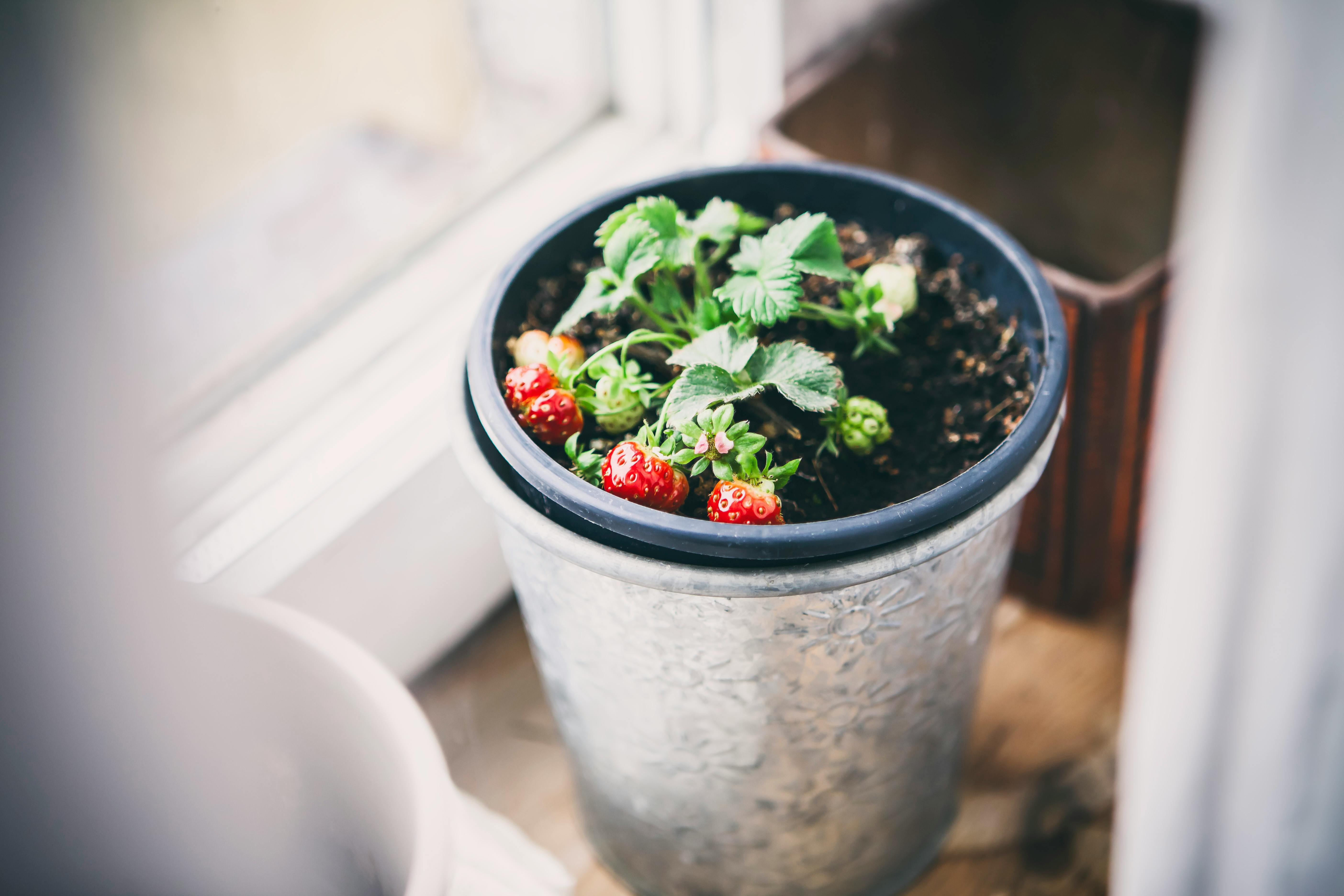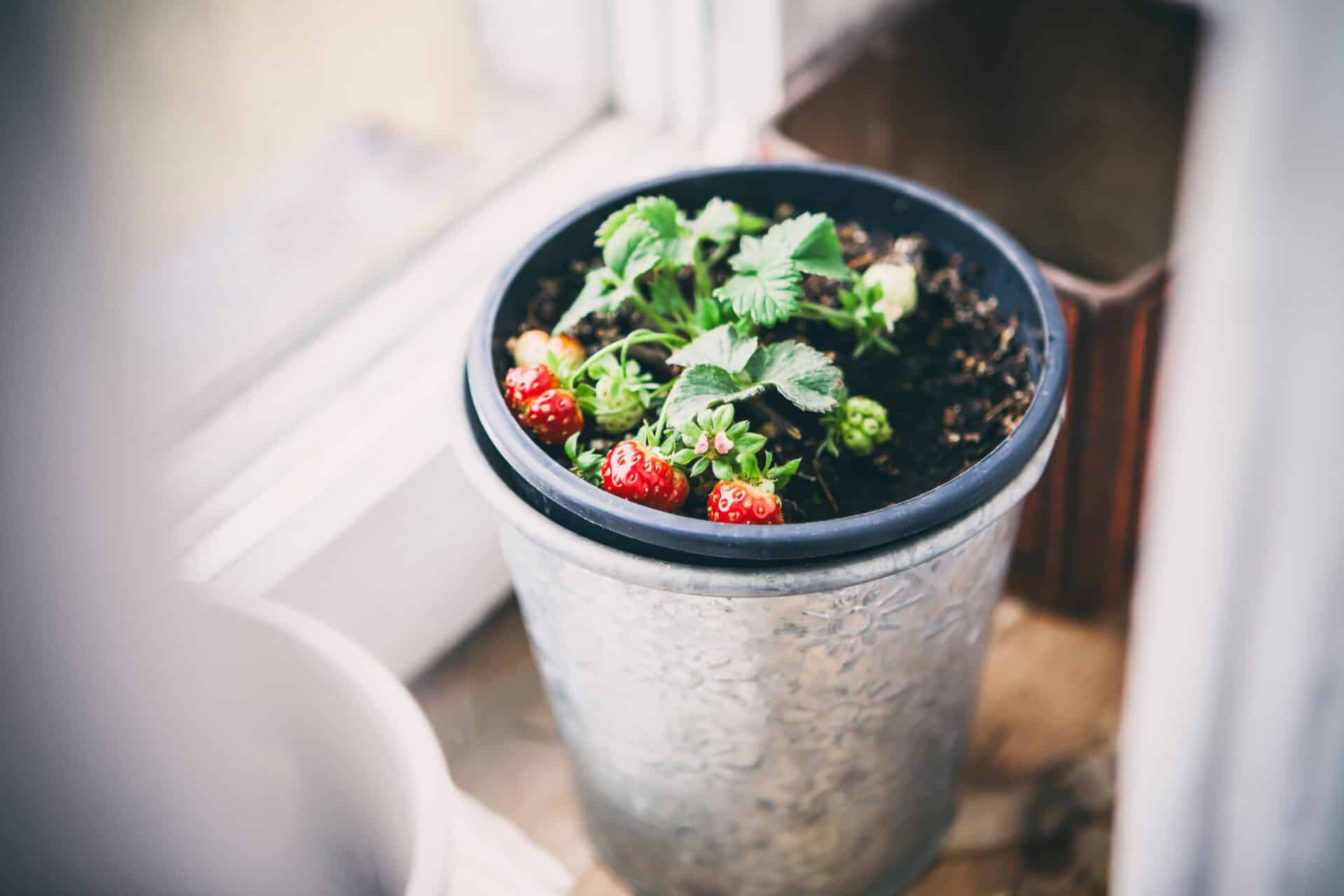Strawberries are a popular and delicious fruit that many people enjoy. But did you know that strawberries have specific soil requirements? One of the most important requirements is soil acidity. So do strawberries like acid soil? The answer is yes! Strawberries prefer acidic soil with a pH of between 5.5 and 6.5 to thrive and produce the most flavorful fruit.Acid soil is soil that has a pH level of less than 7.0, which is on the acidic side of the pH scale. It usually has excessive amounts of hydrogen ions, which lowers its pH level and makes it more acidic. Acidic soils are more common in areas with high rainfall, such as tropical regions, as rain tends to leach basic cations such as calcium, magnesium and potassium from the soil. This leaves an excess of hydrogen ions in the soil, making it more acidic.
Soil pH for Strawberries
Strawberries are a popular fruit that many people enjoy growing in their backyard. But to get the best results from your strawberry plants, it is important to understand what soil pH is needed for them to grow well. The ideal soil pH range for growing strawberries is between 5.5 and 6.5. This range is slightly acidic and provides the perfect environment for the plant to absorb the nutrients it needs from the soil.
The pH of a soil can be tested with a simple soil test kit, which can be purchased at most garden supply stores or online. Once you know the pH of your soil, you can make adjustments as needed to create an ideal environment for your strawberry plants. If the soil is too alkaline (above 7.0), you may need to add sulfur or aluminum sulfate to lower the pH level. On the other hand, if your soil is too acidic (below 5.5), adding lime or dolomitic limestone will help raise it to an acceptable range for strawberries.
In addition to adjusting the pH of your soil, it’s also important to make sure that it has good drainage and aeration so that your strawberry plants can get enough oxygen and water. It’s best not to overcrowd your strawberry plants so they have enough space to grow properly and get enough sunlight. You should also add organic matter like compost or peat moss every year to help keep your soil healthy and provide essential nutrients for your strawberry plants.
In summary, understanding what soil pH is needed for strawberries is an important part of successful strawberry gardening. The ideal range for strawberries is between 5.5 and 6.5, but if yours falls outside this range you may need to adjust it with sulfur or lime before planting them in order to create a healthy environment that will allow them thrive.
Advantages of Growing Strawberries in Acidic Soil
Growing strawberries in acidic soil has a number of advantages. For starters, acidic soil helps keep the pH level of the soil low, which is important for plants to absorb nutrients and moisture from the soil. Additionally, acidic soils are also good at trapping nutrients such as nitrogen and phosphorous, which are essential for strawberry growth and development.
Another advantage of growing strawberries in acidic soil is that it allows the plant’s roots to penetrate deeper into the soil, providing more stability and support for the plant. This also helps promote better drainage, which can help reduce waterlogging and promote better air circulation around the roots.
Finally, growing strawberries in acidic soil can also help reduce diseases and pests that can damage the plants. Acidic soils are often less hospitable to pests, and this can reduce the need for chemical treatments to prevent or control infestations. Furthermore, acidic soils are also less likely to be affected by fungal diseases that can affect strawberry plants.
Overall, growing strawberries in acidic soil offers a number of advantages that make it an ideal choice for strawberry cultivation. The low pH level helps promote nutrient absorption and better drainage while reducing potential disease and pest issues. Additionally, it allows the roots to penetrate deeper into the soil for better stability and support for the plant.
Advantages of Growing Strawberries in Acidic Soil
Growing strawberries in acidic soil has several advantages. Firstly, strawberries prefer a slightly acidic soil pH of between 5.0 to 6.5, and acidic soils are often naturally low in pH, meaning less effort is required to adjust the pH to a favorable level. Additionally, acidic soils are typically rich in organic matter, providing a good source of nutrition for the strawberry plants. Furthermore, many soil-borne diseases are less likely to occur when growing strawberries in acidic soils as certain fungi and bacteria thrive in neutral or alkaline environments.
Disadvantages of Growing Strawberries in Acidic Soil
However, there are also some disadvantages associated with growing strawberries in acidic soils. One potential issue is iron chlorosis – a condition caused by an inability to take up iron from the soil due to elevated acidity levels. Iron chlorosis can cause yellowing between the leaf veins and other symptoms such as stunted growth or poor fruit production. Additionally, excessive amounts of available aluminum can be toxic for strawberry plants and can occur more frequently with highly acidic soils. Therefore, regular soil testing and adjustments may be necessary when growing strawberries in highly acidic soils.
Testing Soil Acidity for Strawberries
The soil pH is a very important factor when it comes to growing strawberries. The ideal pH range for strawberry cultivation is between 5.5 and 6.5. A soil pH that is too high or too low can result in poor yields and unhealthy plants. Knowing the acidity of your soil before planting is essential for successful strawberry production. Here are some tips on testing the acidity of your soil to ensure it’s optimal for growing strawberries.
The first step in testing your soil is to purchase a pH test kit from a garden center or hardware store. These kits usually come with a probe that you insert into the soil and then read the results from a gauge on the instrument itself. Once you’ve inserted the probe into the ground, you’ll be able to get an accurate reading of the current acidity level in your soil and determine whether or not it’s suitable for growing strawberries.
Another option for testing your soil’s acidity is to collect a sample of it and take it to a local extension office or lab for analysis. The lab will be able to provide an exact measurement of your soil’s pH, as well as other important information such as nutrient levels, organic matter content, and so on. This method may be more expensive than using a home test kit, but it will give you more detailed results that you can use to accurately adjust your soil’s acidity if necessary.
Finally, if you’re not sure how to test your soil yourself, you can always contact a local nursery or garden center for advice on how best to proceed with testing and adjusting your soil’s pH level before planting strawberries. They should be able to provide you with helpful information about what type of test kit to purchase or where to send samples for lab analysis, as well as advice on how best to adjust the pH level in order to create optimal conditions for strawberry cultivation.
By following these steps, you can ensure that your soil has the right amount of acidity before planting strawberries so that they grow healthy and yield bountiful harvests!

How to Make Soil More Acidic for Strawberries
If you want to grow strawberries, you need to make sure the soil in your garden is acidic. Strawberries prefer a pH level between 5.5 and 6.5. If your soil has a higher pH level, there are several ways to lower it and make your soil more acidic.
One way to lower the pH level in your soil is by adding sphagnum peat moss or composted leaves. Both of these materials will help to acidify the soil and also add organic matter, which can improve the structure of the soil and help retain moisture.
Another way to make your soil more acidic is by adding aluminum sulfate or sulfur-based amendments, such as ammonium sulfate or iron sulfate. These materials can be added directly to the soil and will help create an environment that is more conducive for growing strawberries.
Finally, you can also use organic mulches such as pine needles or bark chips to help keep the soil around your strawberry plants acidic. These materials will break down over time and release acids into the soil which can help lower the pH level of your garden soil.
By following these tips, you can ensure that your strawberry plants have an environment that is ideal for their growth and development. With a bit of effort, you can create a perfect habitat for growing sweet, juicy strawberries in your own garden!
Should Organic Matter be Added to Strawberry Beds?
Organic matter is an important component of a healthy strawberry bed. Adding organic matter such as compost, aged manure, and peat moss to the soil can improve soil texture, drainage, and nutrient availability. It also helps retain moisture and add beneficial microbes to the soil. Using organic matter in strawberry beds can help reduce disease pressure and improve fruit quality.
Organic matter should be added to strawberry beds before planting and incorporated into the top 6-8 inches of soil. This can be done by using a tiller or garden fork, or by simply mixing it in with your hands. It is important to ensure that the organic matter is well-incorporated so that it does not form a crust on top of the soil which can cause water runoff or drainage problems.
Once the organic matter has been added to the bed, it should be watered thoroughly to allow it to settle into the soil. The organic matter will slowly break down over time, releasing nutrients into the soil for plants to use. It is important to keep in mind that too much organic matter can actually lead to nutrient deficiencies in plants due to an imbalance of nitrogen and other elements in the soil.
In conclusion, adding organic matter to strawberry beds is an important step towards creating a healthy growing environment for your plants. It helps improve texture, drainage, nutrient availability, and moisture retention while also reducing disease pressure and improving fruit quality. However, it is important not to overdo it as too much organic matter can lead to nutrient deficiencies in plants due to an imbalance of nitrogen and other elements in the soil.
Fertilizers Used on Strawberry Beds
Fertilizers are essential for strawberry beds in order to keep the plants healthy and producing a good harvest. Different types of fertilizers can be used, depending on the type of soil, environment, and climate. The most common fertilizers used on strawberry beds are organic fertilizers such as compost or manure, as well as chemical-based synthetic fertilizers.
Organic fertilizers provide slow-release nutrients that feed the soil and help to improve its structure. Compost is an excellent source of organic matter for strawberry beds, providing essential nutrients such as nitrogen, phosphorus, and potassium. Manure is also an effective fertilizer for strawberry beds, providing a high amount of nitrogen and other trace minerals.
Synthetic chemical-based fertilizers can also be used on strawberry beds to provide quick-release nutrients. These types of fertilizers can provide a boost of energy for rapid plant growth but should be used in moderation since too much fertilizer can cause damage to the plants. Most synthetic fertilizers should be applied every two weeks during the growing season in order to ensure proper plant nutrition.
No matter which type of fertilizer is chosen for a strawberry bed, it is important to follow package instructions closely and use the correct amount for optimal results. It is also important to monitor soil pH levels regularly in order to ensure that plants are receiving the necessary nutrients from the fertilizer being applied.

Conclusion
The discussion of whether strawberries prefer acidic soil or not has been a contentious one. While it is true that strawberries need slightly acidic soil to thrive, it is also true that they will do well in a variety of soils. Additionally, the pH of the soil can be adjusted to meet the needs of different varieties.
Ultimately, strawberries are versatile plants that do not require a strict adherence to acidic soils in order to do well. However, if you’re looking for maximum fruit production, then slightly acidic soil is the way to go. In any case, proper fertilization and maintenance are essential for optimal growth and yield no matter what type of soil you’re dealing with.
In conclusion, strawberries can grow in a variety of soils, but they tend to prefer slightly acidic soils with a pH between 5.5 and 6.5 for optimal growth and yield. The pH of the soil can be adjusted if necessary by adding lime or sulfur or by using specially formulated fertilizers. Proper fertilization and maintenance are still essential for successful strawberry cultivation regardless of the pH level of the soil.



